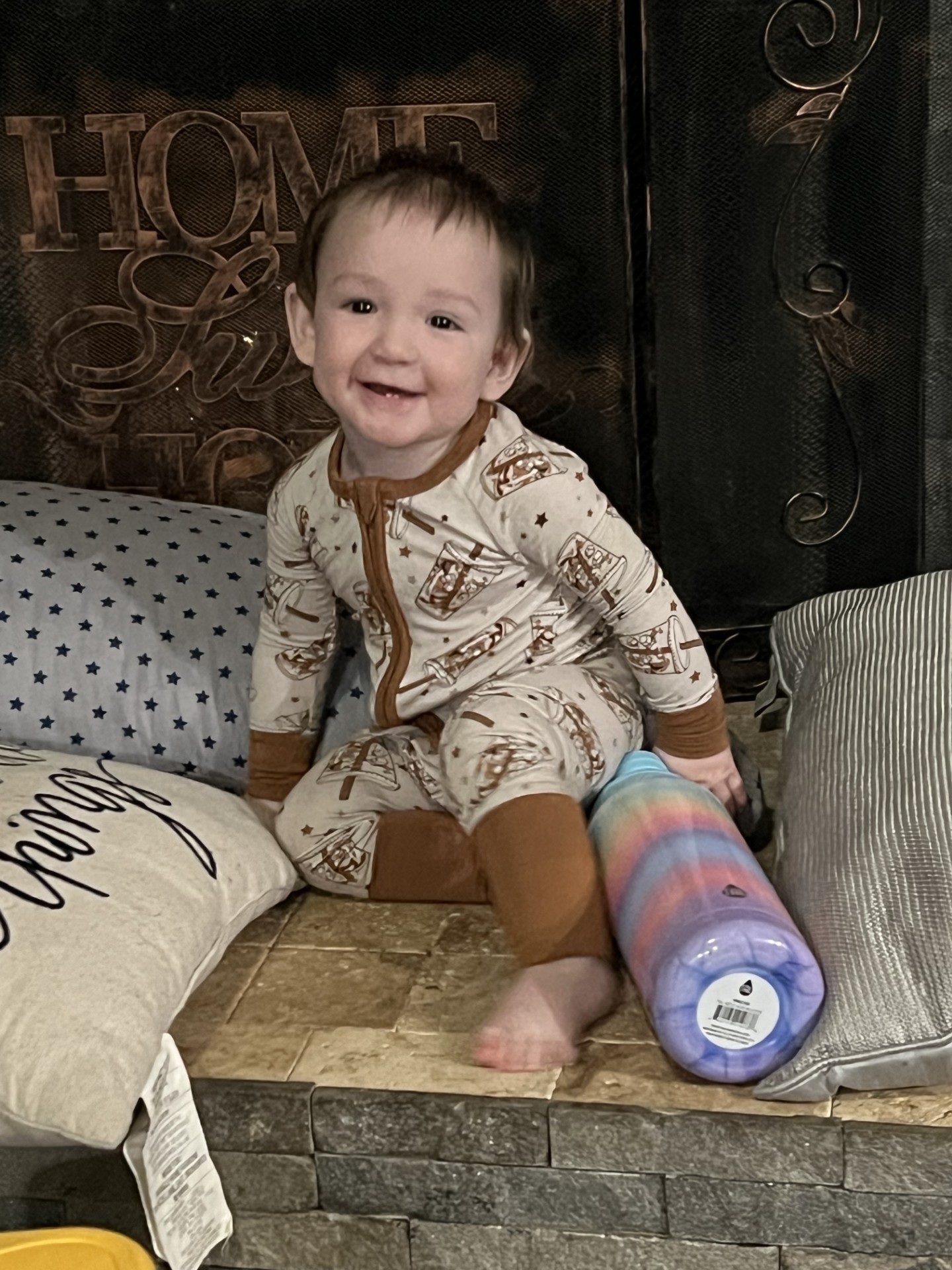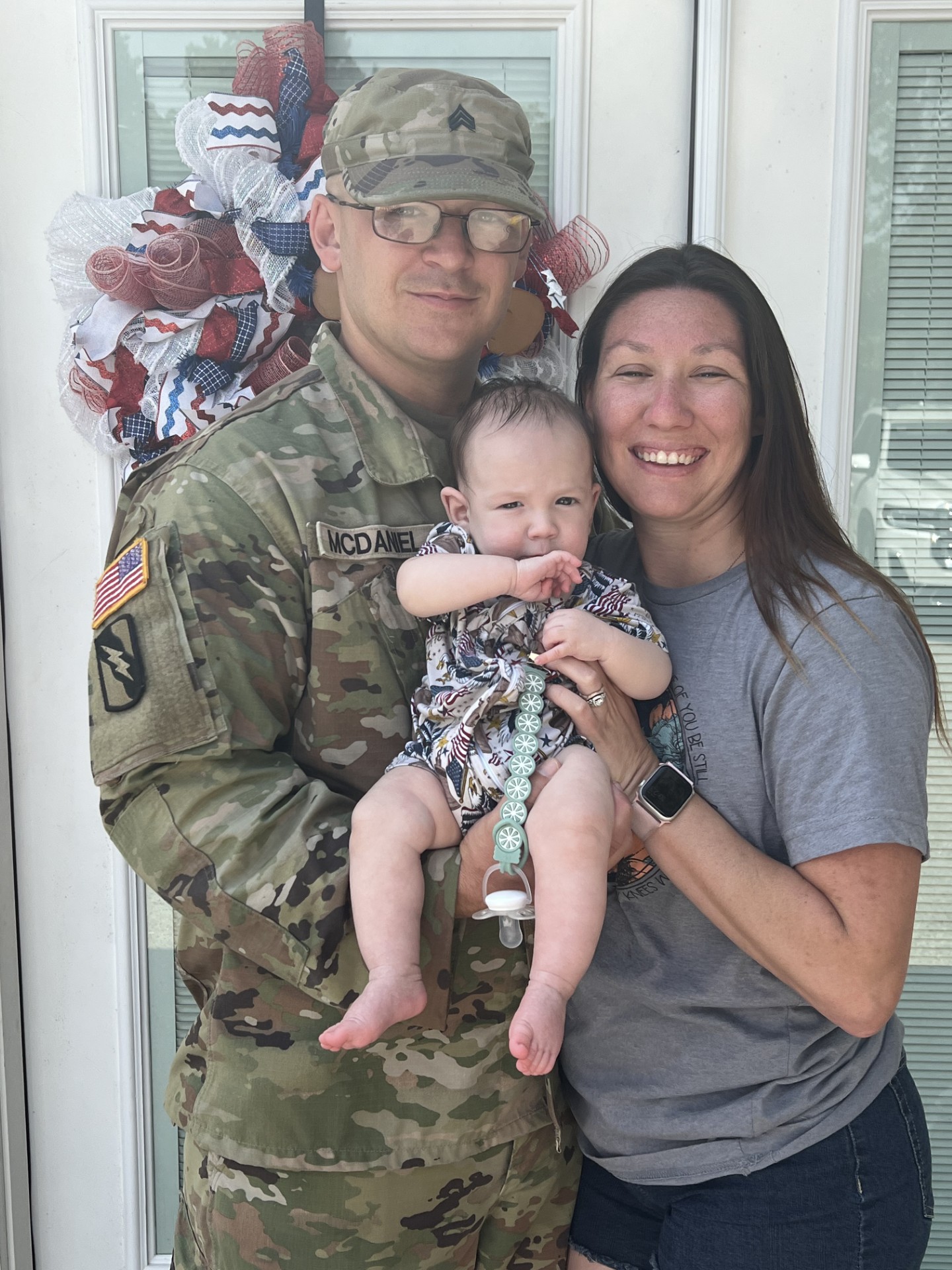Surviving and Thriving: Asher's courageous journey through bladder exstrophy repair
- Category: Patient Stories
- Posted on:

After years of anticipation, Colleen and Brandon McDaniel’s dreams came true when they learned they were expecting their first child, a baby boy named Asher.
“I was spending time with my husband’s family one night, and I wasn’t feeling well,” recalled Colleen. “I said, ‘Honey, I think we need to stop by the store and get a test.’ Soon enough, we found out we were pregnant. We were thrilled! I already have three children, and this baby would be my husband’s first.”
As Colleen’s pregnancy progressed, everything seemed to be going smoothly. She met with her OB-GYN regularly near the couple’s home in Ocean Springs, Mississippi. However, their lives took an unexpected turn when Asher entered the world. Born on February 11, 2023, weighing 6 pounds, 4 ounces, Asher’s arrival was initially a joyous occasion. However, shortly after his birth doctors noticed something unusual. Tests revealed Asher had been diagnosed with bladder exstrophy.
Bladder exstrophy is a rare congenital condition where the bladder forms outside the body instead of inside the pelvis due to a developmental abnormality. It affects approximately 1 in every 30,000 to 50,000 births in the United States. In addition to the bladder being exposed, the condition may also involve abnormalities in the pelvic bones, reproductive organs, and abdominal wall. Treatment varies widely but typically involves surgical intervention, often performed shortly after birth or in early infancy. 
“Instead of a belly button, we learned Asher’s bladder protruded from his abdomen,” said Colleen. “Soon after delivering Asher, the on-call pediatrician explained his condition to me and my husband, and called several children’s hospitals in the area to see who could take Asher’s case, as it was very rare.”
Children’s Hospital New Orleans agreed to take Asher’s case, as their comprehensive team of urologists and orthopedic specialists are regional experts in this type of care. He was airlifted to Children’s Hospital that same day. After Colleen was discharged from the hospital in Biloxi the following day, she and Brandon made the one-and-a-half hour drive from their home in Mississippi to New Orleans.
The McDaniels receive a higher level of care
The McDaniels consulted with a multidisciplinary team of doctors and nurses, including Dr. Christopher Roth, the lead urologist and surgeon overseeing Asher’s care, and Dr. William Accousti, the orthopedic surgeon who would address the unique challenges posed by bladder exstrophy. Despite the complexity of his condition, Asher was remarkably healthy aside from the bladder exstrophy, offering a glimmer of hope. Asher received care in the NICU, where he was monitored for four days before going home.
“The doctors wanted to wait to perform Asher's surgery until he was 6 months old, to give time for him and his bladder to grow," explained Colleen. "This was important to improve the chances of a successful outcome, ensuring his bladder would function properly and his overall development would be on track."
Asher had monthly follow-up appointments with Dr. Roth up until his scheduled reconstruction surgery. During that timeframe, the treatment team met often to follow up on his progress and plan for his upcoming procedure. Dr. Roth notes, “The rarity of these cases means that we approach these cases as a team and utilize everyone in our department to assess the case of offer input on management. We are fortunate to have 70 years of cumulative clinical experience and want to use each of those years (and gray hairs) to our advantage.” 
A complex, multidisciplinary approach
The next pivotal moment in Asher’s remarkable journey came on August 25, 2023, when he underwent a transformative surgery to address his bladder exstrophy. The 13-hour procedure involved repositioning Asher’s bladder and correcting the anatomical abnormalities caused by the condition. The collaborative surgeries conducted by Dr. Roth and Dr. Accousti marked a huge milestone in Asher’s path to recovery.
“The primary goals of the surgery were to reconstruct the bladder, close the opening in the abdominal wall, and reposition the pelvic bones to their proper alignment,” explained Dr. Roth. “The unique aspect of bladder exstrophy is that building blocks of the lower urinary system and genitalia are there, but they stopped short of complete development. Each child’s anatomy is different though our goal is picking up where the developmental process stopped. In Asher’s case this meant turning his open bladder and urethra into the spherical and tubular shape they are intended to be. Not only do these organs need to be reconstructed, but they also need to be released from the abdominal wall and placed internally. A key aspect of being able to get the organs where they need to be and then closing the abdominal wall is reconstruction of the bony pelvis.”
The need for repair of both the soft tissues and the musculoskeletal system brings together two surgical services that don’t often overlap in the operative setting. Dr. Accousti has been working with the urology team for the last 18 years and has become the regional expert in the orthopedic care of bladder exstrophy. “In Asher's case, our focus was on correcting the structural abnormalities of his pelvis to provide optimal support for his bladder," explained Dr. Accousti. "By making specialized cuts to his pelvic bones and pulling the two halves inward, we ensured proper pelvic stability to enhance the success of the bladder and soft tissue reconstruction. Our goal was to provide a foundation for Asher's complex urological procedures and subsequent continued growth and development, allowing him to thrive."
After the surgery, Asher faced a challenging recovery process, spending time in the pediatric intensive care unit (PICU) to manage his pain and monitor his progress. With support from his family and the medical team at Children’s Hospital, Asher gradually regained his strength.
"It was incredibly tough seeing Asher in such a fragile state,” shared Colleen. “He was hooked up to a ventilator and the epidural in his back was necessary to manage his pain. But as his recovery progressed, we began to see gradual signs of improvement. The nurses were able to manage his pain either with oral medications or through his IV without the need for an epidural anymore. Despite the challenges ahead, I stayed by Asher’s side throughout his three-week hospital stay before he was finally discharged home." 
Colleen's husband, Brandon, a U.S. Army soldier serving overseas, couldn't be with her during Asher's surgery and recovery. However, both their families were at the hospital, offering support. Despite the distance, Colleen communicated with Brandon daily, keeping him updated on Asher's progress.
When Asher was ready to head home from the hospital, Asher had catheters in place for about a month. These were crucial for his recovery, ensuring proper urine drainage from his kidneys and bladder, preventing complications, and helping to monitor his urinary function during the healing process. To ensure his hips and pelvis healed correctly he had an external fixator placed which looks like a baby wearing an erector set. It was a huge relief to Asher (and his mom!) when the external fixator was removed and he was able to more freely move around again.
Asher today
As a reunited family, Colleen and Brandon are proud of 1-year-old Asher, who is thriving. He has achieved numerous milestones, from crawling to pulling up on everything, and now walking, running, and playing with boundless energy. Always on the go, he plays with his older siblings, who absolutely adore him. 
Asher continues to have regular follow-up care from Dr. Roth as part of his comprehensive treatment plan, essential for managing potential complications and ensuring the optimal functioning of his reconstructed bladder. During his upcoming follow-up appointment this summer, Asher will undergo bladder testing to assess his bladder’s growth and capacity, to make sure it’s functioning as it should.
“Our experience with the medical team and the nurses at Children’s Hospital was exceptional,” said Colleen. “Everyone provided wonderful care for Asher and made sure I took care of myself during the three weeks I stayed with him in the hospital. Despite the challenges we faced at the start of Asher’s journey, we are grateful for the care our son received, especially since it wasn’t too far from home.”
To learn about our Urology Program, visit Urology | Children's Hospital New Orleans (chnola.org)
For more information about our Orthopedics Services, visit Pediatric Orthopedic Services New Orleans, LA | Pediatric Orthopedists (chnola.org)



